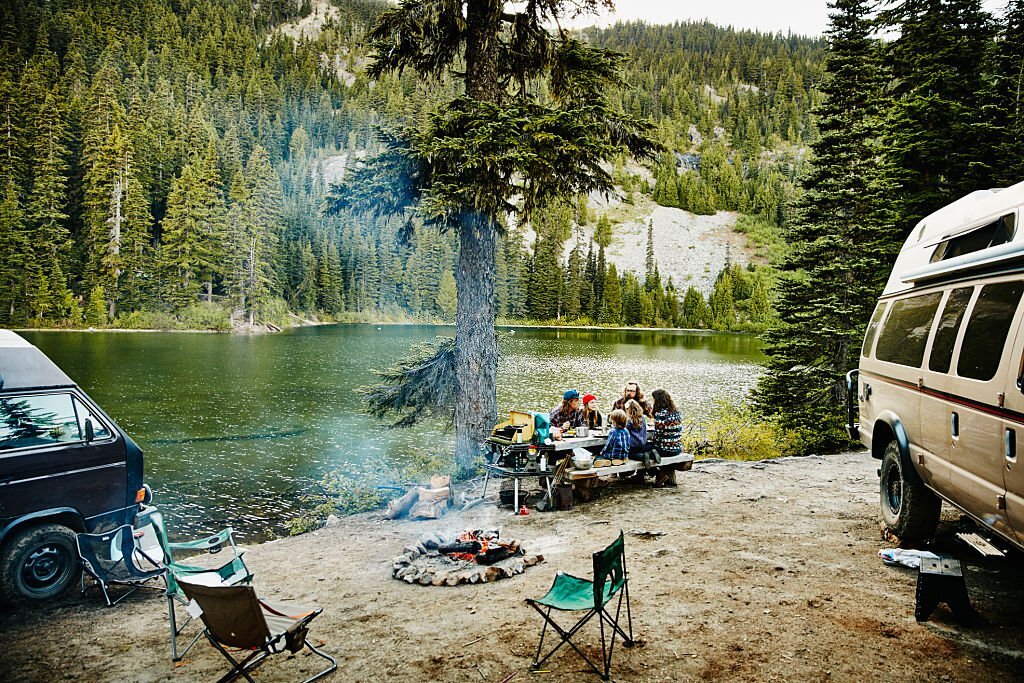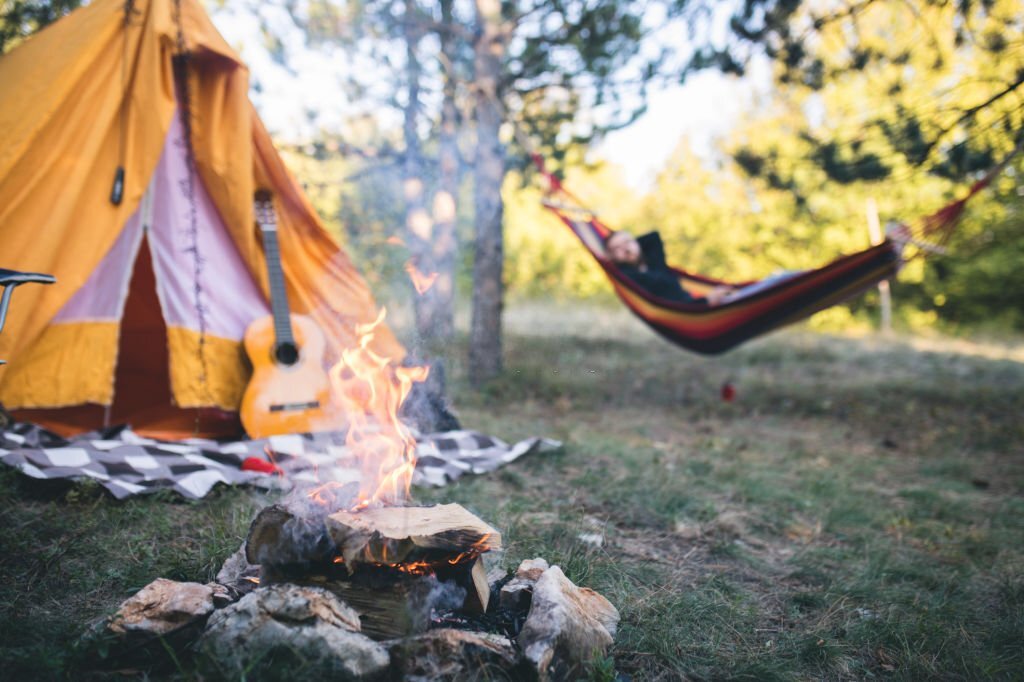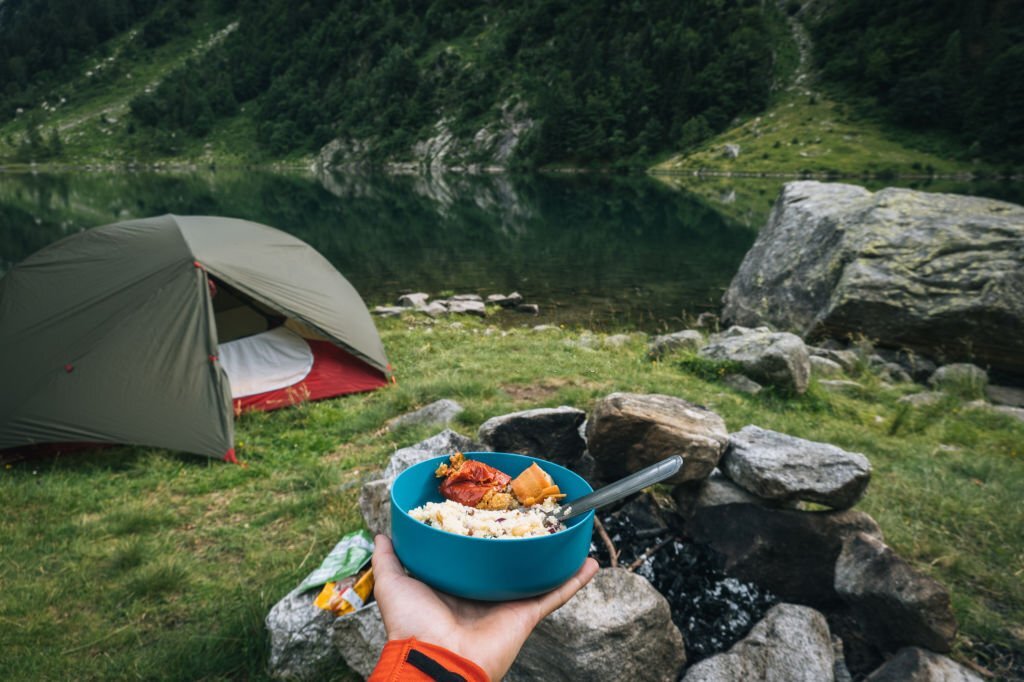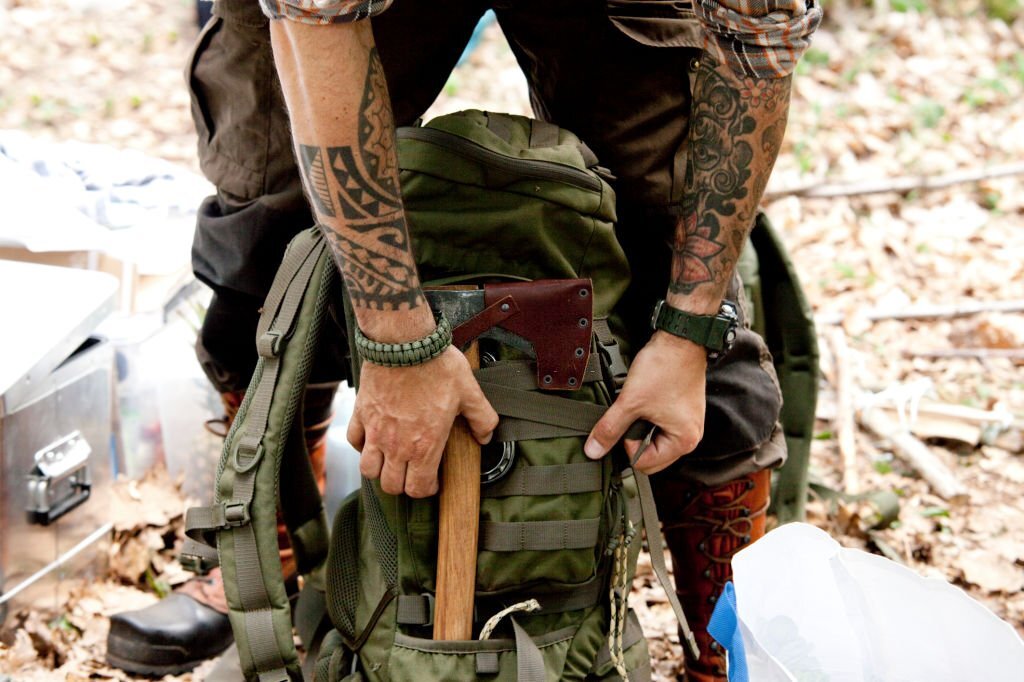Imagine the sensation of your heartbeat pounding in sync with the rhythm of the wild, and your senses attuned to every rustle and whisper of nature’s secrets. Each step forward, each challenge overcome, becomes a testament to the resilience of the human spirit and the indomitable will to survive.
Through riveting tales of real-life survival, ancient techniques passed down through generations, and cutting-edge strategies developed by modern experts, we unlock the art of self-reliance in the outdoors.
Join us as we traverse treacherous terrains, embrace the unpredictability of weather, and decode the language of the wilderness. In this guide, we’ll share life-saving tips, essential tools, and invaluable wisdom that will empower you to embrace the unknown with courage and confidence.

Overview of the Importance of Being Prepared When Spending Time Outdoors
Spending time in the outdoors can be a great way to connect with nature, relax and explore, but it is important to be prepared for emergencies.
Natural disasters can happen when you least expect them, so understanding the basics of outdoor survival is key. Even the most experienced hikers must take certain precautions to stay safe.
The three most important survival needs are water, shelter, and warmth. Without these, serious physical and mental health complications can arise. It is also important to have a plan and be prepared for worst-case scenarios.
Part 1: Water
Water is essential for survival in the outdoors. Not only does it keep us hydrated, but it can also be used to keep us clean, to cool us down and even to signal for help.
When outdoors, it is important to be aware of your water supply and to take steps to conserve it. You should never assume that natural water sources are safe to drink from without treating or boiling it first.
To stay hydrated in the wilderness, here are some key safety tips to keep in mind:
- Bring enough water for everyone in your group.
- Bring a water filter or purification tablets to make sure your water is safe to drink.
- Avoid drinking untreated water from natural sources as it can be contaminated with bacteria.
- Be aware of your environment and look for signs of standing water, such as ponds or streams.
- If you need to ration your water, try and drink a small amount every hour to avoid dehydration.
Remember, staying hydrated is an essential part of surviving in the outdoors. By keeping these tips in mind, you can ensure that you have enough water to keep you safe and healthy.

The Importance of Water
Water is an essential need and one that should never be taken for granted when spending time outdoors. It is not only necessary for hydration, but it can also be used for tasks such as preparing food, cleaning items, or even starting a fire.
It is important to understand the importance of water and to take steps to ensure you have enough for your needs when spending time in the wilderness.
When venturing outdoors, it is important to know your access to natural water sources. You should also familiarize yourself with any regulations or safety measures that may be in place where you’re going.
Also, as a point of caution, always ensure that the water you are drinking is clean and safe for consumption.
Safety Tips
When it comes to obtaining water while out in the wilderness, there are several safety tips that should be kept in mind:
- Always bring more water with you than you think you’ll need in case of an emergency.
- If you are unsure of a natural water source’s purity, boil it before consuming it.
- If you are unable to boil water, make sure to filter or purify it before drinking.
It is also important to keep in mind that if you are filled up with water, it is much easier to remain safe and healthy than if you are dehydrated. Make sure to stay hydrated throughout your outdoor adventures.
Part 2: Shelter
Finding or building a shelter is one of the most important components of survival in the outdoors. Having a safe and dry place to rest and protect yourself from the elements is crucial if you are in an emergency situation.
It’s important to be aware of what materials are available nearby that can be used to build a shelter. Trees, leaves, sticks, rocks, and other natural items can be used to construct makeshift shelters in a pinch.
When constructing your shelter, it’s important to consider the shape, size, and stability of your structure. It should be big enough for you to fit comfortably inside, and sturdy enough to protect from wind and rain. Make sure it is well-sealed and insulated from the ground as much as possible.
It is also important to build your shelter in the right location. Look for a spot that is sheltered from the wind and rain, preferably in a clearing or spot with good visibility. Additionally, look for dry ground and avoid areas with standing water.
When building your shelter, use your natural environment as much as possible and take advantage of existing features like trees, rocks, and shrubs. This will help make your shelter stronger and more secure.
Finding Materials & Building a Shelter
In an emergency situation, having shelter is of utmost importance. Finding the right materials and building a suitable shelter can be crucial for survival, especially in extreme weather conditions.
Here are some tips for finding the materials and techniques for building a shelter outdoors.
Finding Materials:
The first step for constructing a shelter is to find the materials you will need. Look for sticks and branches, dry leaves and grasses, rocks, and anything else that can be used for building.
If it is raining or snowing, look for logs and branches that are already on the ground and use those for your shelter.

Building the Shelter:
- Build the framework of your shelter with sticks or logs. Arrange them in a way that will provide adequate protection from the elements.
- Next, fill in any gaps with dry leaves, grasses, and other materials that you have found. This will create an outer layer of insulation and keep you warm.
- Finally, pile dirt or rocks around the bottom of the shelter to further insulate it. This will also help to secure the shelter and make it sturdier.
Once you have finished constructing your shelter, it is important to make sure it is well insulated.
This can be achieved by stacking layers of leaves, branches, and other items on the roof and sides of the shelter. Doing this will keep the shelter warm and help protect you from the elements.
Safety Tips:
- Make sure the shelter you build is secure and will not collapse easily.
- Be aware of any potential hazards nearby, like animal dens, that may pose a risk.
- If possible, try to build your shelter in an area with some natural protection, such as by a large boulder or trees.
- Check the area around your shelter and dispose of any materials that could be a fire hazard.
By following these tips, you can be sure that your shelter is safe and secure and will provide adequate protection from the elements when you are outdoors.
Part 3: Warmth
Understandably, staying warm is key to survival in the outdoors, especially when temperatures drop at night or during cold seasons. Here are some key tips to ensure you stay warm when outdoors.
- Dress in layers. Wearing two or three thin layers of clothing will trap more warm air than a single heavy item.
- Cover your head and neck. A lot of heat escapes through these areas, so be sure to keep them covered!
- Use natural materials to create insulation. Pine needles and leaves can be used to insulate clothing and sleeping bags, helping to keep in the warmth.
- Start a fire. Fires provide both warmth and light, which can be essential to staying alive in the wild.
However, it’s important to remember to never start a fire near combustible materials and to always make sure the fire is completely out before leaving.
Part 4: Food
When spending time outdoors, food should not be overlooked. It is important to pack enough emergency rations to last the duration of your stay, in case it’s needed.
Have a plan in mind for how you will obtain food if needed – this could involve hunting, fishing, or foraging for edible plants.
When foraging for plants, it is essential to only choose ones that you are 100% sure are safe and edible. A good rule of thumb is to avoid anything with a milky sap, leaves with an acidic or soapy taste, and unidentified mushrooms. It is best to stick to fruits, vegetables, and other plants that you recognize.
It is also important to remember that consuming wild plants can pose health risks. Be wary of over-harvesting, as this can deplete local resources and have a negative impact on the environment. Always be sure to follow local regulations when it comes to hunting, fishing, and foraging.
In addition to emergency rations, packing extra food and water is a must when spending time outdoors. This will come in handy in case you end up staying longer than expected.

Emergency Rations & Eating Plants in the Wild
In the event of an emergency, having access to non-perishable food items such as energy bars, nuts, and dried fruit can be life-saving. It is always important to have a backup plan in case of losing food or running out of supplies.
In some cases, it may be necessary to forage for food in the outdoors. It is important to be aware that not all plants are safe to eat. If uncertain, it is best to avoid eating the plant.
Some common edible plants like dandelions, stinging nettles, and wild berries can be found in many areas. However, if still unsure, seek expert advice when possible.
Having the right knowledge and skills can mean the difference between life and death in the wilderness. Knowing what types of plants are edible, how to identify them, and how to prepare them can significantly enhance one’s chance of survival.
Part 5: Essentials
When venturing into the wilderness, it is important to be prepared and know what essential items you need to bring. Having the right equipment can make a big difference and can even save your life in an emergency situation.
Here are some items that you should always have when heading outdoors:
- A first-aid kit
- A map and compass
- Extra food and water
- A multi-tool
- Warm clothes
- A lighter or matches
- A flashlight
- Emergency shelter
- A whistle for signaling for help
- A knife for safety and utilitarian tasks
These items are essential for helping you to stay safe and survive in the outdoors. Be sure to pack them when spending time in the wilderness, and check that all of them are in working order before leaving.
Essentials for Outdoor Survival
When spending time outdoors and in the wilderness, there are certain essential items you should bring with you to survive. It is important to be prepared and to have the right supplies on hand in case of an emergency.
The essential items to pack when planning a trip outdoors are:
- A First aid kit – this should include basic medical items such as bandages, antiseptic cream, and painkillers. It is also important to include items such as a whistle, a signal mirror, and glow sticks for emergency signaling.
- Map & compass – it is important to know where you are and be able to find your way back if you get lost.
- Multi-tool – having a multi-tool with you can be incredibly helpful in case of any emergency repairs. The tool should include items such as a knife, screwdriver, pliers, and wire cutter.
- Extra food & water – it is important to bring enough food and water for unexpected delays or periods of low food supply in the wild.
- Firestarter – this could be anything from a lighter to fire starter cubes, matches, or even flint and steel. Having a way to start a fire is vital in emergency situations.
- Clothing – it is important to wear appropriate clothing for the conditions, as well as having extra clothes on hand in case of any unexpected circumstances.
Having these items on hand will increase your chances of survival in an outdoor emergency situation.

Dress Appropriately
When spending time outdoors, it is important to dress appropriately in order to maximize comfort and safety. The key to dressing for outdoor survival is to wear clothing that will keep you warm but still allow for movement.
Layering is important, as it allows you to add or remove layers to regulate your body temperature. A few essential pieces of clothing for survival in the outdoors include:
- Waterproof jacket and pants
- Lightweight gloves and a hat
- Warm and comfortable boots
- Lightweight and breathable clothing
It is also important to be mindful of the climate and the environment when choosing suitable clothing. For instance, in cold or wet weather, a thick coat and waterproof trousers are essential, while in hot weather lightweight fabrics are recommended to keep cool.
Dressing for the Occasion
When spending time outdoors, it is essential to dress appropriately. The type of clothing you wear can make a huge difference in your comfort and safety, so it is important to be mindful of your wardrobe choices. Here are some tips to help you dress for success in any outdoor situation.
Layering Your Clothing
Layering your clothing is incredibly important when spending time outdoors. Not only does it provide extra insulation against the cold, but it also gives you the flexibility to adjust to changing temperatures.
Start with a thin layer of moisture-wicking fabric to keep you dry, followed by a thicker layer of insulation, and end with a waterproof and windproof outer layer.
Wearing the Right Footwear
It’s essential to wear the right kind of footwear when spending time outdoors. Choose a pair of shoes or boots that are comfortable and supportive, and preferably waterproof as well.
If you plan to spend time in snow or mud, then make sure to pick footwear that is suitable for those conditions. It is also a good idea to bring a spare pair of socks in case your feet get wet or cold.
Accessorizing Wisely
In addition to clothing layers and appropriate footwear, there are several accessories you should consider bringing with you on your outdoor adventures.
These include:
- a hat and gloves
- sunglasses
- sunscreen
- a headlamp
All of these items can help protect you from the elements and make your journey safer and more enjoyable.
Being Aware
Paying attention to the environment can be the difference between life and death in an emergency situation.
Firstly, it is important to understand the potential dangers associated with the terrain or activities you are engaging in. Understanding the risk of flash floods, wildlife, and other natural hazards can help in avoiding dangerous situations.
Secondly, it is important to have a plan for the day. Knowing where you are going, how long you plan on staying, and when you will be back home is essential for remaining safe. If something unexpected does occur, having a plan in place can help you to find safety more quickly.
Finally, it is important to remain alert. Keeping your eyes and ears open can help to spot signs of danger, such as a wild animal or hazardous terrain. It’s also important to be aware of changes in the environment, such as changes in the weather, and to make adjustments to your plan accordingly.
By understanding the risks associated with spending time outdoors, developing a plan, and remaining alert, you will improve your chances of remaining safe in an emergency situation.
Psychological Wellbeing
It can be easy to overlook how important psychological well-being is in a survival situation. It can be scary being in the outdoors, especially in an emergency.
Mental health is just as important as physical health and taking care of your mental wellbeing can mean the difference between life or death.
To keep your mindset positive and stay calm, it’s important to focus on the things you can control. Taking time to meditate or practice mindfulness can help center your thoughts and relieve stress.
Additionally, talking with a friend or family member can provide emotional support and give you someone to lean on for reassurance.
Another important aspect of staying mentally healthy is giving yourself something to do. Keeping busy will help distract from any negative thoughts and reduce the feeling of helplessness that can come with dangerous situations.
- Focus on what you can control
- Practice meditation or mindfulness
- Stay in touch with friends and family
- Find ways to keep busy
Maintaining psychological well-being during an emergency is no easy task, but with practice, it is achievable. Not only will putting these strategies into practice help make a survival situation more bearable, but they are also beneficial skills to have when spending time outdoors.
Maintaining a Positive Mindset in an Emergency
Facing emergency situations can be daunting, especially if you are in a place where you feel vulnerable or completely out of your comfort zone. It is important to stay calm and maintain a positive mindset, even in the face of fear and uncertainty.
One of the best ways to keep a positive attitude is to focus on the things that you do have control over, rather than worry about those that are outside of your scope.
Reminding yourself that there are still options, despite the situation, and thinking about how you can use those options to bring yourself out of danger, can help you stay focused and motivated.
It is also important to remember to take care of yourself during emergencies. Eat regularly and ensure that you are drinking enough water, as dehydration can quickly make any situation worse.
Additionally, take breaks as needed and use relaxation techniques like deep breathing or mindfulness to reduce stress.
Finally, it is important to stay connected with other people. Whether it’s talking to a friend via phone or radio, sending an email, or making a journal entry, writing down your thoughts and feelings can help you manage difficult emotions while also providing an outlet to process your experiences.
Through these strategies, it is possible to come out of any emergency situation with a renewed sense of strength, despite the fear and anxiety it will inevitably bring.

Conclusion
Taking the time to think about what clothing and accessories to wear when spending time outdoors is an important part of staying safe. Layering your clothing, wearing the right footwear, and accessorizing wisely will all help ensure that you are prepared for any situation.
Survival in the Outdoors: Complete Guide FAQ
1. What are some basic survival skills for outdoor situations?
When it comes to survival in the outdoors, it is essential to possess a certain set of skills. Some basic survival skills include starting a fire, first aid, signaling for help, building a shelter, and learning how to purify water. These skills are essential in increasing your chances of survival in a wilderness or survival situation.
2. What should I include in a survival kit?
A well-prepared survival kit is essential for outdoor adventures. It should include items such as a fire starter, basic first aid supplies, a headlamp or flashlight, an emergency blanket, a multi-tool, a compass, extra clothing, a water filtration system, and food rations. Having a well-stocked and organized survival kit will greatly increase your chances of survival in case of an emergency.
3. How can I start a fire without any tools?
Starting a fire without any tools can be challenging but not impossible. One method is to use the friction-based bow drill technique. This involves creating a bow from a sturdy green branch, a cord made from natural fibers, and a spindle and fireboard. By rubbing the spindle against the fireboard using the bow, you can generate enough friction to create an ember, which can then be used to start a fire.
4. What are some wilderness survival tips if I ever get lost?
If you find yourself lost in the wilderness, it’s important to stay calm and focused. Some wilderness survival tips include finding or creating a shelter, signaling for help using visual cues or sounds, conserving your energy, and staying hydrated. It’s also advisable to stay in one place if you become lost to make it easier for search and rescue teams to locate you.
5. How important is it to know basic first aid in a survival situation?
Knowing basic first aid can be the difference between life and death in a survival situation. It allows you to provide immediate medical assistance to yourself or others until professional help is available. Basic first aid skills include treating wounds, managing injuries, performing CPR, and knowing how to handle medical emergencies in remote settings.
6. How can I stay warm in cold outdoor conditions?
Staying warm is crucial to survive in cold outdoor conditions. Some tips to stay warm include insulating your body by wearing layers of clothing, using blankets or an emergency shelter to trap heat, avoiding sweaty clothing that can make you colder, and consuming warm liquids to raise your core body temperature.